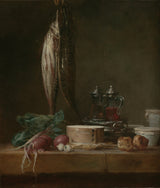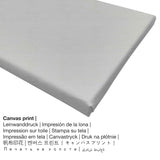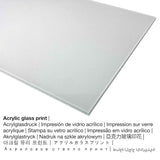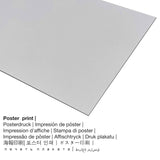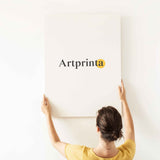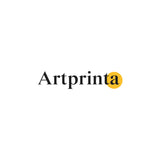Jean-Baptiste-Siméon Chardin, 1769 - Nature morte aux poissons, légumes, gougères, pots - tirage d'art
TTC Expédition calculée à la caisse.
En 1769 le peintre Jean-Baptiste-Siméon Chardin créé le art classique pièce d'art. Le plus 250 year-old original creation was painted with the size: 68,6 x 58,4 cm. Huile sur toile was used by the European artist as the medium of the artwork. This piece of art belongs to the digital art collection of Musée J. Paul Getty located in Los Angeles, California, United States of America. With courtesy of Musée J. Paul Getty (public domain license).Creditline of the artwork: . Besides, the alignment is portrait and has a side ratio of 1: 1.2, ce qui implique que la longueur est 20% plus courte que la largeur. The painter Jean-Baptiste-Siméon Chardin was an artist, whose artistic style was primarily Baroque. The painter was born in the year 1699 in Paris and deceased at the age of 80 en 1779 à Paris.
Matériaux de produits disponibles
The product dropdown menu gives you the opportunity to pick the material and sizeaccording to your preferences. You can select your preferred material and size between the following choices:
- Aluminium dibond (impression métallique): Aluminium Dibond prints are prints on metal with a true depth effect - for a modern impression and a non-reflective surface structure. A direct Aluminium Dibond Print is your perfect introduction to the sophisticated world of fine art reproductions made with aluminum. The bright sections of the artwork shine with a silky gloss, however without glow. The direct print on aluminium is the most popular entry-level product and is a truly stylish way to showcase fine art prints, because it puts 100% of the viewer’s focus on the whole artwork.
- L'impression sur toile: The canvas print, which should not be mistaken with an artwork painted on a canvas, is a digital copy applied on a cotton canvas material. Your printed canvas of this artpiece will let you turn your art print into a large size artwork like you would see in a gallery. How can I hang a canvas print on my wall? A canvas print has the advantage of being low in weight. This means, it is easy to hang up your Canvas print without additional wall-mounts. Canvas prints are suitable for all kinds of walls.
- L'impression d'affiche (matériau en toile): The poster print is a UV printed canvas paper with a slight structure on the surface, that reminds the original masterpiece. It is particularly designed for placing the art print using a custom frame. Please keep in mind, that depending on the absolute size of the poster print we add a white margin 2-6cm around the print to facilitate the framing with a custom frame.
- Impression sur verre acrylique brillant (avec revêtement en verre véritable): An print on acrylic glass, often labelled as a an art print on plexiglass, will convert your chosen original into great home décor. With an acrylic glass fine art print sharp contrasts plus small image details will be more identifiable because of the subtle tonal gradation.
Avertissement: We try whatever we can to describe the art products in as much detail as possible and to showcase them visually. At the same time, the colors of the print products and the printing may differ somehwat from the image on the device's monitor. Depending on the settings of your screen and the condition of the surface, colors may not be printed as exactly as the digital version shown here. Since all the art reproductions are printed and processed manually, there may also be minor differences in the exact position and the size of the motif.
Détails des éléments structurés
| Type d'article: | reproduction de beaux-arts |
| Méthode de reproduction: | reproduction numérique |
| Technique de production: | impression numérique (impression directe UV) |
| Provenance: | Production allemande |
| Type de stock: | production à la demande |
| Utilisation prévue du produit: | photo murale, art mural |
| Alignement de l'image: | alignement portrait |
| Rapport latéral: | longueur en largeur 1: 1.2 |
| Implication du rapport hauteur / largeur de l'image: | la longueur est 20% plus courte que la largeur |
| Variantes de tissu: | impression sur verre acrylique (avec revêtement en verre véritable), impression d'affiche (papier de toile), impression en métal (aluminium dibond), impression sur toile |
| Toile sur châssis de civière (impression sur toile): | 50x60cm - 20x24 ", 100x120cm - 39x47", 150x180cm - 59x71 " |
| Impression sur verre acrylique (avec revêtement en verre véritable): | 50x60cm - 20x24 ", 100x120cm - 39x47", 150x180cm - 59x71 " |
| Variantes d'impression d'affiche (papier de toile): | 50 x 60 cm - 20 x 24 ", 100 x 120 cm - 39 x 47" |
| Variantes de taille d'impression en aluminium (matériau aluminium dibond): | 50 x 60 cm - 20 x 24 ", 100 x 120 cm - 39 x 47" |
| Cadre: | Sans cadre |
Informations générales sur l'œuvre unique
| Titre de l'oeuvre: | "Still Life with Fish, Vegetables, Gougères, Pots" |
| Classement de l'oeuvre: | peinture |
| Terme générique: | art classique |
| siècle: | 18th siècle |
| Année de création: | 1769 |
| Âge de l'oeuvre: | 250 ans |
| Peint sur: | huile sur toile |
| Taille originale (illustration): | 68,6 x 58,4 cm |
| Musée / collection: | Musée J. Paul Getty |
| Emplacement du musée: | Los Angeles, Californie, Etats-Unis d'Amérique |
| Site Web : | www.getty.edu |
| Type de licence: | domaine public |
| Avec l'aimable autorisation de: | Musée J. Paul Getty |
Bref aperçu de l'artiste
| Nom de l'artiste: | Jean-Baptiste-Siméon Chardin |
| Genre: | mâle |
| Nationalité de l'artiste: | Français |
| Travaux: | peintre |
| Pays : | France |
| Classement de l'artiste: | vieux maitre |
| Styles d'art: | Baroque |
| Vie: | 80 ans |
| Année de naissance: | 1699 |
| Lieu de naissance: | Paris |
| Décédés: | 1779 |
| Décédé à (lieu): | Paris |
Droit d'auteur © | www.artprinta.com (Artprinta)
Description de l'œuvre originale du site Web du musée (© - par le musée J.Paul Getty - www.getty.edu)
Nobody has a greater understanding of the harmony of color and reflections. Ah, Chardin, what you grind on your palette is not this color or that, red, black, or white, but the very substance of things.
Jean-Siméon Chardin impressed critic Denis Diderot with his unique style and impeccable technique, which he applied to what was then considered a lowly genre, the still life. Exemplifying what Diderot noticed in his paintings, Chardin here transforms a simple kitchen scene with a subtle palette, innovative composition, and virtuoso brushwork.
The objects' arrangement is spare but dynamic: Two mackerels hang vertically in front of a plain background, perpendicular to an arrangement of food on the tabletop below. Brilliant light directs the eye, attracting attention to the shiny fish, leafy greens, root vegetables, a wheel of cheese, and covered bowls. Although the overall palette is subdued, the oil and vinegar cruets are infused with rich color. The signature and date in the lower right corner are the last Chardin is known to have applied to a still life.

